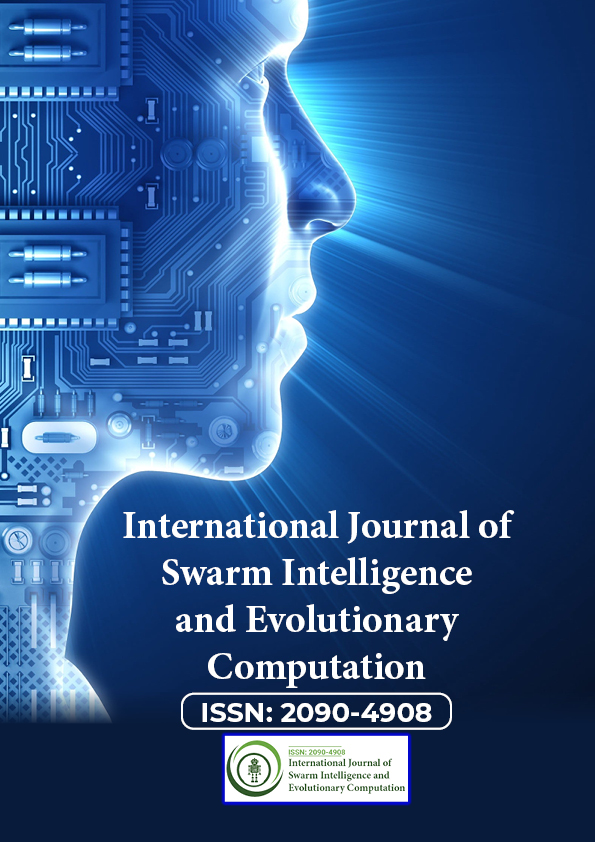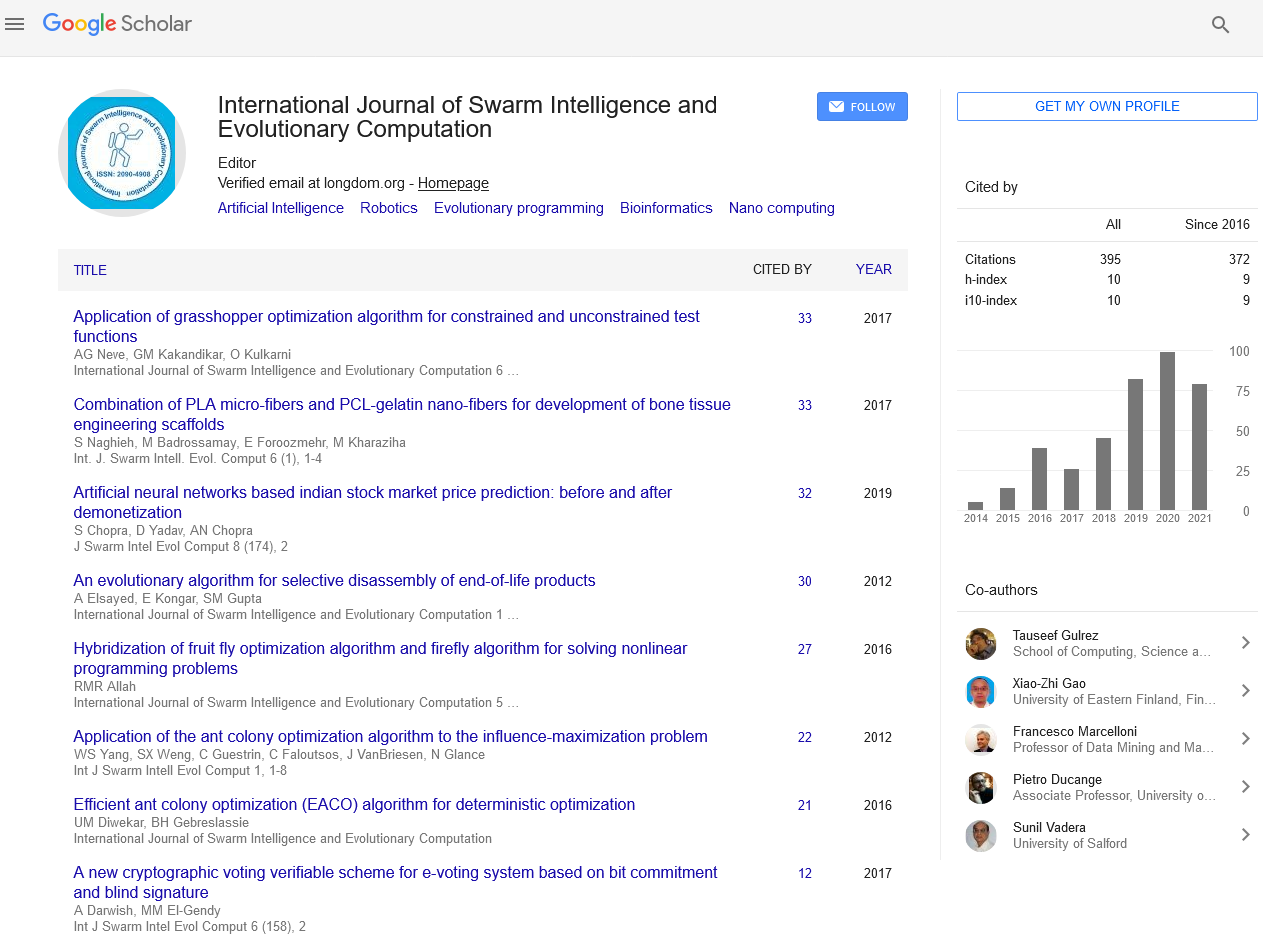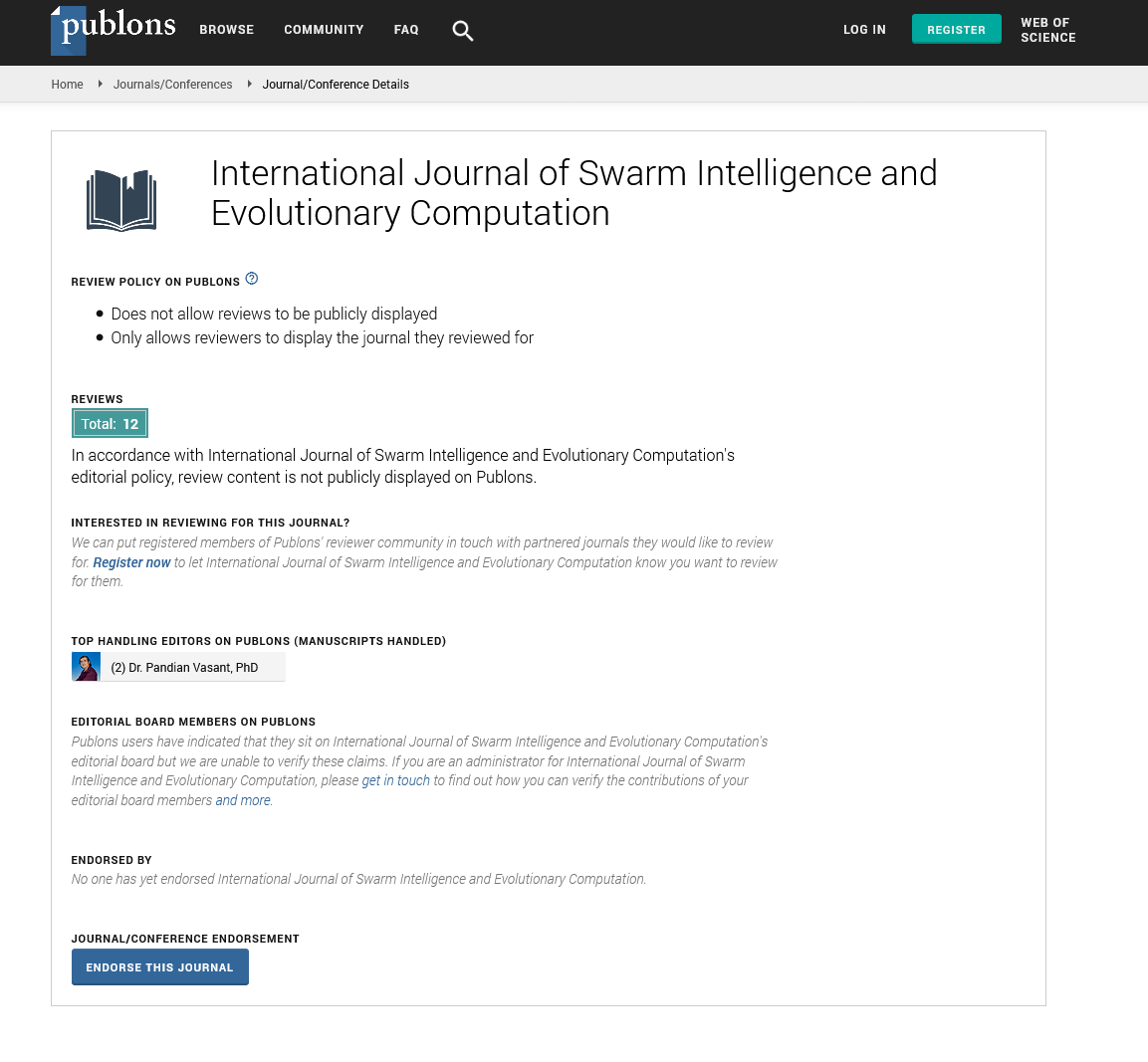Indexed In
- Genamics JournalSeek
- RefSeek
- Hamdard University
- EBSCO A-Z
- OCLC- WorldCat
- Publons
- Euro Pub
- Google Scholar
Useful Links
Share This Page
Journal Flyer

Open Access Journals
- Agri and Aquaculture
- Biochemistry
- Bioinformatics & Systems Biology
- Business & Management
- Chemistry
- Clinical Sciences
- Engineering
- Food & Nutrition
- General Science
- Genetics & Molecular Biology
- Immunology & Microbiology
- Medical Sciences
- Neuroscience & Psychology
- Nursing & Health Care
- Pharmaceutical Sciences
Perspective - (2022) Volume 11, Issue 10
Information Security and its Significance
Yang Le*Received: 01-Sep-2022, Manuscript No. SIEC-22-18843; Editor assigned: 05-Sep-2022, Pre QC No. SIEC-22-18843 (PQ); Reviewed: 19-Sep-2022, QC No. SIEC-22-18843; Revised: 26-Sep-2022, Manuscript No. SIEC-22-18843 (R); Published: 03-Oct-2022, DOI: 10.35248/2090-4908.22.11.279
Description
InfoSec or information security is a set of tools and practices for protecting digital and analogue data. Information Technology domains covered by InfoSec include infrastructure and network security, auditing, and testing. It employs tools such as authentication and permissions to prevent unauthorized users from accessing sensitive information. These safeguards assist in avoiding the risks associated with information theft, modification, or loss.
Organizations can protect digital and analogue information using information security. Cryptography, mobile computing, social media, as well as infrastructure and networks containing private, financial, and corporate information, are all covered by InfoSec. Cyber security, on the other hand, safeguards both raw and meaningful data against internet-based threats.
The primary goals of information security are typically related to ensuring the confidentiality, integrity, and availability of company information. Because InfoSec encompasses so many disciplines, it frequently involves the implementation of various types of security, such as application security, infrastructure security, cryptography, incident response, vulnerability management, and disaster recovery.
Information security encompasses a broader range of safeguards, including cryptography, mobile computing, and social media. It is related to information assurance, which is used to protect data from non-human threats such as server failures or natural disasters. Cyber security, on the other hand, only addresses Internet-based threats and digital data.
Information Security Types
Application security
Applications and application programming interfaces are protected by application security strategies. These techniques can be used to prevent, detect, and fix bugs and other vulnerabilities in the applications. If not secured, application and API vulnerabilities can provide a gateway to broader systems, putting the data at risk.
Specialized tools for application shielding, scanning, and testing are used extensively in application security. These tools can helps in identifying flaws in applications and their associated components. Application security concerns both the applications to use and those may develop, as both must be safeguarded.
Infrastructure security
Networks, servers, client devices, mobile devices, and data centers are all protected by infrastructure security strategies. Without proper precautions, the growing connectivity between these and other infrastructure components puts information at risk. This is a risk because connectivity spreads vulnerabilities throughout the systems. As a result, minimizing dependencies and isolating components while still allowing intercommunications is an important goal of infrastructure security.
Cloud security
Cloud security is similar to application and infrastructure security in that it protects cloud or cloud-connected components and information. Cloud security incorporates additional safeguards and tools to address the vulnerabilities that arise from Internet-facing services and shared environments, such as public clouds. It also includes an emphasis on centralizing security management and tooling. This centralization allows security teams to keep track of information and threats across distributed resources.
Another aspect of cloud security is collaboration with the cloud provider or third-party services. Users are frequently unable to fully control their environments because the infrastructure is typically managed when using cloud-hosted resources and applications. As a result, cloud security practices must account for limited control and put safeguards in place to limit access and vulnerabilities caused by contractors or vendors.
Significance
The importance of information security is growing by the day, with more data breaches occurring each year than ever before. The absolute necessity of good cyber security practices has been recognized globally, from preventing operational interruptions such as power or electricity outages in cities, which could even result in the loss of lives, to preventing the loss of sensitive data. Organizations and governments are now more willing to invest time, money, and resources in improving cyber security measures in order to reduce security risks and prevent cyber-attacks.
Citation: Le Y (2022) Information Security and its Significance. Int J Swarm Evol Comput. 11:279.
Copyright: © 2022 Le Y. This is an open-access article distributed under the terms of the Creative Commons Attribution License, which permits unrestricted use, distribution, and reproduction in any medium, provided the original author and source are credited.


